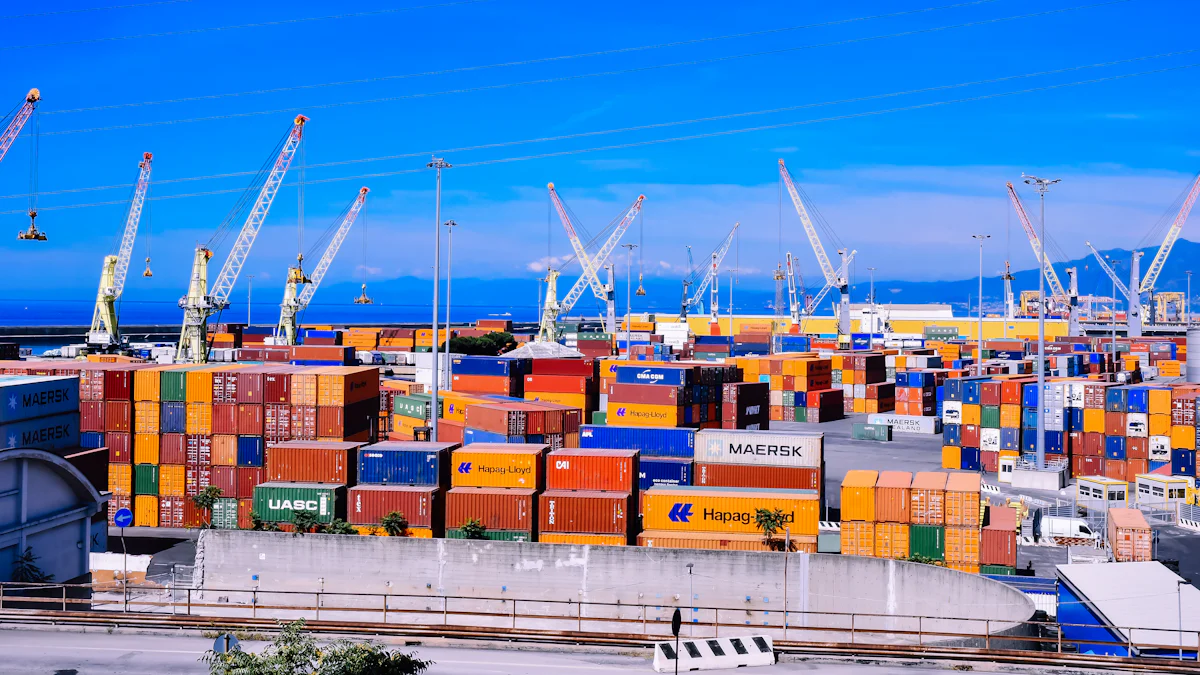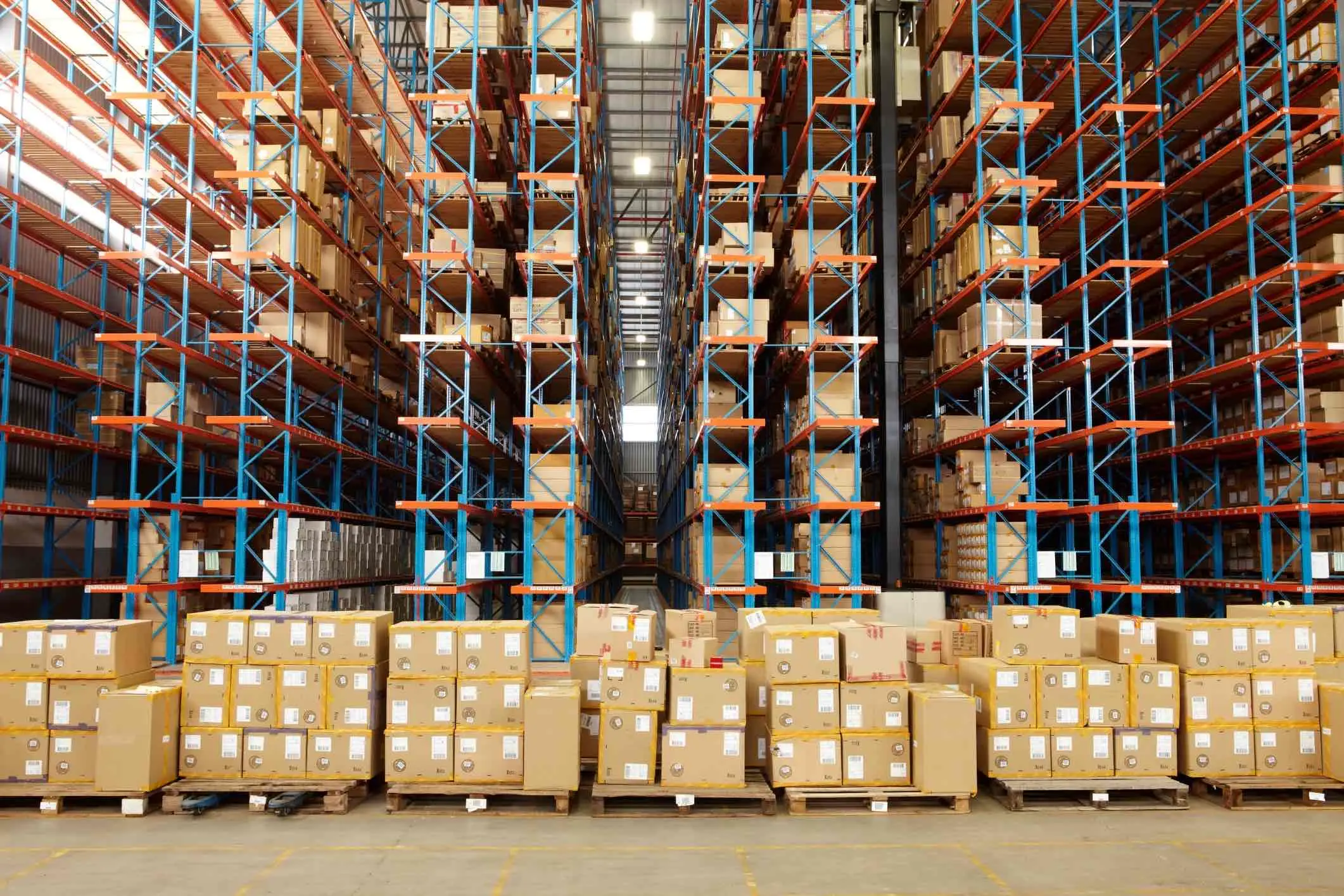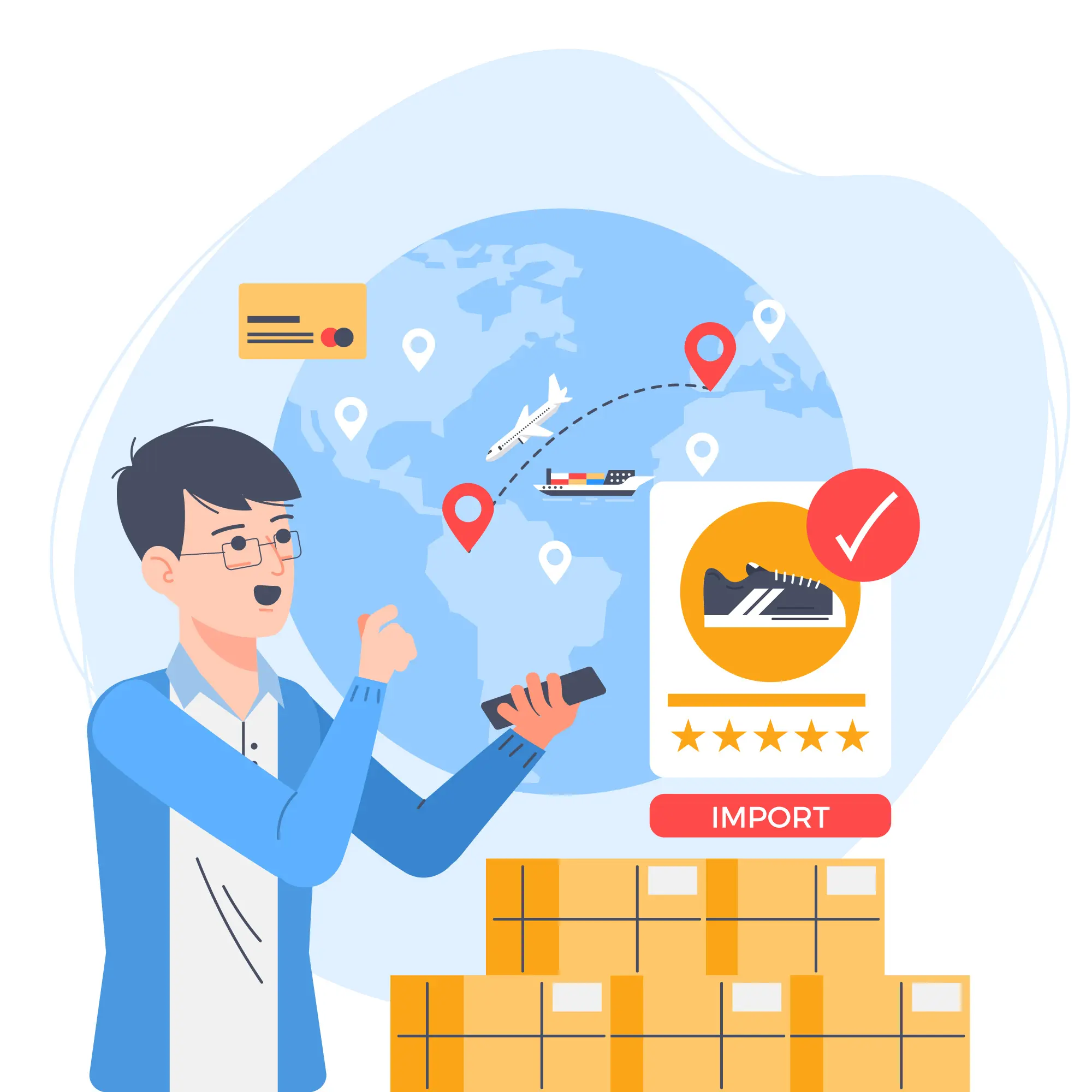What You Should Know About Customs Clearance Completed

Customs clearance refers to the process where a shipment passes through customs authorities, ensuring compliance with all legal and regulatory requirements. This step is vital for the smooth movement of goods across international borders. A completed customs clearance signifies that the package has met all necessary conditions for entry or exit, paving the way for its delivery. Understanding this process is crucial for businesses and individuals, as it ensures successful import clearance, minimizes delays, and avoids potential legal complications.
What Does "Customs Clearance Completed" Mean?
Definition and Explanation
The term "import customs clearance completed" signifies that a shipment has successfully passed through the necessary customs checks. This process ensures that the goods comply with all legal and regulatory requirements for entry or exit in a specific country. Once completed, the package is cleared for further movement, whether for delivery to the recipient or for additional transit.
Customs clearance plays a pivotal role in international trade. It confirms that all duties, taxes, and documentation have been properly handled. Without this step, goods cannot legally cross borders. A successful import clearance not only facilitates the smooth flow of shipments but also minimizes potential delays and avoids legal complications.
When and Where It Occurs in the Shipping Process
"Import customs clearance completed" typically occurs at a designated customs checkpoint, which could be at an airport, seaport, or land border crossing. The process begins when the shipment arrives in the destination country. Customs officials review the accompanying documentation, inspect the goods if necessary, and ensure compliance with local regulations.
This step is crucial in the shipping process. For example, when a package arrives at a port, customs authorities verify its contents against the declared information. They check for proper documentation, such as invoices, packing lists, and certificates of origin. Once all requirements are met, they mark the customs clearance as completed, allowing the shipment to proceed to its next destination.
Examples of Scenarios Where Customs Clearance Is Completed
E-commerce Deliveries: A customer orders electronics from an overseas retailer. Upon arrival in the destination country, customs officials review the shipment's documentation and confirm that all duties have been paid. Once cleared, the package is released for delivery to the customer.
Manufacturing Imports: A company imports raw materials for production. Customs clearance ensures that the materials meet regulatory standards and that all taxes are settled. After completion, the goods are transported to the manufacturing facility without delay.
Cross-Border Trade: A business exports goods to a neighboring country. Customs clearance confirms that the shipment complies with export and import regulations on both sides of the border. This step ensures a seamless transition across international boundaries.
Bonded Warehousing: Goods stored in a bonded warehouse undergo customs clearance before being released for local distribution. This process ensures that all legal obligations are fulfilled before the goods enter the domestic market.
In each scenario, completing customs clearance is essential for the uninterrupted movement of goods. Working with experienced customs brokers can streamline this process, ensuring compliance and reducing the risk of delays.
The Customs Clearance Process Explained

Understanding the customs clearance process is essential for ensuring the smooth movement of goods across international borders.
Key Steps in Customs Clearance Processing
The customs clearance process involves several structured steps that ensure compliance with regulations and the seamless transit of goods. Each step plays a vital role in achieving customs clearance processing complete.
Submission of Required Documentation
The first step in import customs clearance is submitting the necessary documentation. Importers must provide accurate and complete paperwork, including invoices, packing lists, and certificates of origin. These documents verify the shipment's contents, value, and compliance with trade regulations. Missing or incorrect information can lead to delays, making this step crucial for efficient customs clearance processing.
"Accurate documentation ensures smooth clearance of cargo and prevents significant delays in the process."
Payment of Duties and Taxes
Once the documentation is verified, importers must pay the applicable duties and taxes. Customs authorities calculate these charges based on the shipment's value, classification, and destination country's tariff regulations. Timely payment ensures that the goods can proceed without unnecessary hold-ups. This step is a cornerstone of customs clearance processing complete.
Inspection and Approval by Customs Authorities
Customs officials may inspect shipments to confirm compliance with regulations. They check for prohibited items, verify the declared value, and ensure adherence to safety standards. After approval, the shipment receives clearance, marking the completion of the customs clearance process. This inspection safeguards the integrity of international trade while facilitating the legal movement of goods.
Key Players in Import Customs Clearance
Several entities collaborate to ensure the import customs clearance process runs smoothly. Each player has a specific role in achieving customs clearance processing complete.
Customs Brokers
Customs brokers act as intermediaries between importers and customs authorities. They handle documentation, calculate duties, and ensure compliance with regulations. Their expertise simplifies the customs clearance process, reducing the risk of errors and delays.
Importers and Exporters
Their active participation is critical for a successful import clearance.
Shipping Carriers
Shipping carriers transport goods across borders and often assist with customs-related tasks. They provide essential shipping documents, such as bills of lading, and coordinate with customs brokers to expedite the clearance process. Their role ensures that shipments reach their destinations efficiently.
By understanding these steps and the roles of key players, businesses can navigate the customs clearance process more effectively. Proper preparation and collaboration with experienced professionals can significantly enhance the likelihood of a successful import clearance.
How JusTrade Simplifies Customs Clearance Challenges
Ensuring Accurate and Complete Documentation
Accurate documentation forms the backbone of a smooth import customs clearance process. Errors or omissions in paperwork often lead to delays, penalties, or even confiscation of goods. JusTrade addresses this challenge by offering a robust system that ensures all required documents are complete and precise. The platform integrates seamlessly with clients' ERP systems, enabling real-time data synchronization. This integration minimizes manual errors and ensures that invoices, packing lists, and certificates of origin meet regulatory standards.
"Accurate documentation ensures smooth clearance of cargo and prevents significant delays in the process."
By automating document preparation and validation, JusTrade reduces the time spent on administrative tasks. Businesses benefit from faster processing times, which contribute to a more efficient customs clearance experience. This approach not only enhances compliance but also builds trust with customs authorities, paving the way for a successful import clearance.

JUSDA Solutions
To provide you with professional solutions and quotations.
Leveraging JusTrade’s Intelligent Customs Clearance Solutions
JusTrade employs cutting-edge technology to simplify the complexities of import customs clearance. Its proprietary SAAS platform uses AI algorithms and big data analysis to optimize the clearance process. The platform categorizes commodities intelligently, calculates duties accurately, and identifies potential compliance risks before they escalate. These features ensure that shipments move through customs checkpoints without unnecessary delays.
The platform also provides real-time tracking, allowing businesses to monitor the status of their shipments at every stage. This transparency enhances decision-making and enables proactive measures to address potential bottlenecks. By leveraging these intelligent solutions, JusTrade ensures a seamless and efficient customs clearance process, helping businesses maintain their competitive edge in the global market.
Staying Informed About Import/Export Regulations
Navigating the ever-changing landscape of import/export regulations can be daunting. Non-compliance often results in fines, delays, or even the rejection of shipments. JusTrade simplifies this challenge by keeping businesses informed about the latest regulatory updates. The platform's built-in compliance tools analyze trade policies and provide actionable insights tailored to specific industries.
For example, businesses can leverage preferential trade agreements or duty drawback programs to reduce costs. JusTrade ensures that clients remain compliant while optimizing their financial resources. This proactive approach not only minimizes risks but also contributes to a more efficient customs clearance process. By staying ahead of regulatory changes, businesses can focus on their core operations without worrying about compliance issues.
Proactively Communicating with Shipping Partners
Effective communication with shipping partners plays a pivotal role in ensuring a seamless customs clearance process. Businesses that prioritize proactive engagement with their logistics providers often experience fewer delays and enhanced operational efficiency. Establishing clear and consistent communication channels allows all parties to stay informed and aligned throughout the shipping journey.
"Efficient customs clearance can significantly impact business operations, providing a competitive advantage in the marketplace." – YX Shanghai
Benefits of Proactive Communication
Minimized Delays: Regular updates between businesses and shipping partners help identify potential bottlenecks early. For instance, if customs authorities require additional documentation, swift communication ensures timely submission, preventing unnecessary hold-ups.
Enhanced Accuracy: Shipping partners often assist in verifying critical details, such as shipment classifications and declared values. This collaboration reduces errors in documentation, which could otherwise lead to penalties or shipment rejections.
Cost Optimization: By maintaining open communication, businesses can leverage opportunities to reduce costs. For example, shipping partners may suggest alternative routes or methods to avoid high tariffs or storage fees at customs.
Strategies for Effective Communication
Establish Clear Expectations: Define roles and responsibilities at the outset. Ensure that shipping partners understand the specific requirements for each shipment, including deadlines, documentation, and compliance standards.
Leverage Technology: Utilize digital platforms to streamline communication. Tools like real-time tracking systems and automated notifications keep all stakeholders updated on shipment statuses, fostering transparency and accountability.
Schedule Regular Check-Ins: Periodic meetings or calls with shipping partners help address any concerns promptly. These check-ins also provide an opportunity to review performance metrics and identify areas for improvement.
Real-World Impact
Proactive communication not only enhances the customs clearance process but also contributes to broader business success. Companies that maintain strong relationships with their shipping partners often achieve faster time-to-market, leading to improved customer satisfaction. Additionally, by avoiding fines and minimizing storage fees, businesses can lower their overall expenses and gain a competitive edge.
In today's interconnected global marketplace, collaboration with shipping partners is no longer optional—it is essential. Businesses that invest in building these relationships position themselves for long-term success in international trade.
Tips for Streamlining the Customs Clearance Process

Use Technology and Automation Tools Like JusTrade
Streamlining customs procedures in simplifying import customs clearance.
Automation tools also provide predictive analytics, helping companies anticipate potential issues before they arise. For instance, JusTrade categorizes commodities intelligently and calculates duties accurately. This proactive approach minimizes delays and ensures smooth shipment movement. By adopting advanced technology, businesses can streamline their operations and focus on growth.
"Automation in customs clearance not only saves time but also enhances accuracy and compliance."
Build Strong Relationships with Customs Brokers
Customs brokers serve as essential partners in the import customs clearance process. Their expertise ensures that shipments comply with all legal requirements. Building strong relationships with these professionals can significantly improve efficiency. Businesses should prioritize selecting experienced brokers who understand the complexities of international trade.
Regular communication with customs brokers fosters trust and collaboration. Sharing accurate and timely information allows brokers to handle documentation and duties effectively. Additionally, businesses can benefit from their insights into regulatory changes and best practices. A reliable customs broker acts as a bridge between companies and customs authorities, ensuring seamless clearance.
Plan Ahead for Potential Delays
Delays in import customs clearance can disrupt supply chains and increase costs.
Forecasting potential challenges, such as peak shipping seasons or regulatory changes, allows businesses to adjust their strategies. For example, scheduling shipments during less congested periods can reduce transit times. Proactive planning also includes allocating buffer time for inspections or unforeseen circumstances. By anticipating delays, businesses can maintain smooth operations and meet customer expectations.
Regularly Review and Update Compliance Practices
Businesses engaged in international trade must prioritize the regular review and update of their compliance practices. Customs regulations frequently change due to evolving trade policies, economic conditions, and geopolitical factors. Staying updated ensures that businesses remain compliant and avoid penalties or shipment delays.
Importance of Regular Reviews
Regular compliance reviews help businesses identify gaps in their processes. These reviews ensure that all documentation, procedures, and systems align with current customs requirements. For example, a company importing goods may need to adjust its practices to reflect changes in tariff classifications or duty rates. By conducting periodic audits, businesses can proactively address potential issues before they escalate.
"Compliance is not a one-time task but an ongoing commitment to adhering to international trade standards."
Steps to Update Compliance Practices
Monitor Regulatory Changes Businesses should actively track updates to customs laws and trade agreements. Subscribing to industry newsletters or consulting with customs brokers provides valuable insights into regulatory shifts. This practice ensures that businesses adapt quickly to new requirements.
Conduct Internal Audits Regular audits of internal processes help identify inefficiencies or non-compliance risks. Reviewing documentation, such as invoices and certificates of origin, ensures accuracy and completeness. Audits also verify that employees follow established procedures, reducing the likelihood of errors.
Train Employees on Compliance Employees play a critical role in maintaining compliance. Providing regular training sessions keeps them informed about the latest regulations and best practices. Well-trained staff can handle customs documentation more effectively, minimizing the risk of delays or penalties.
Leverage Technology for Updates Digital tools like JusTrade simplify the process of updating compliance practices. The platform provides real-time alerts on regulatory changes and automates documentation updates. Businesses can use these tools to streamline their operations and maintain compliance effortlessly.
Benefits of Updated Compliance Practices
Reduced Risk of Penalties: Staying compliant minimizes the chances of fines or legal actions.
Improved Efficiency: Updated practices streamline customs clearance, reducing delays.
Enhanced Reputation: Consistent compliance builds trust with customs authorities and business partners.
By regularly reviewing and updating compliance practices, businesses can navigate the complexities of international trade with confidence. This proactive approach not only ensures smooth operations but also strengthens their position in the global market.
Understanding the meaning of "customs clearance completed" is essential for navigating international trade. This milestone signifies that shipments have met all regulatory requirements, ensuring their smooth transit across borders. Businesses must prepare thoroughly and adopt proactive measures to avoid delays or compliance issues. Leveraging expert solutions like JusTrade empowers companies to streamline their import customs clearance processes. By integrating advanced technology and maintaining accurate documentation, businesses can achieve a successful import clearance, enhancing efficiency and competitiveness in the global market.
See Also
Exploring Innovations in Sea Freight Logistics for 2024
Achieving Success in International Trade Through JUSDA
Comprehensive Overview of Leading Global Logistics Firms
Ensuring Supply Chain Excellence: A JUSDA Guide
Enhancing Efficiency with JUSDA's Latest Warehousing Solutions
